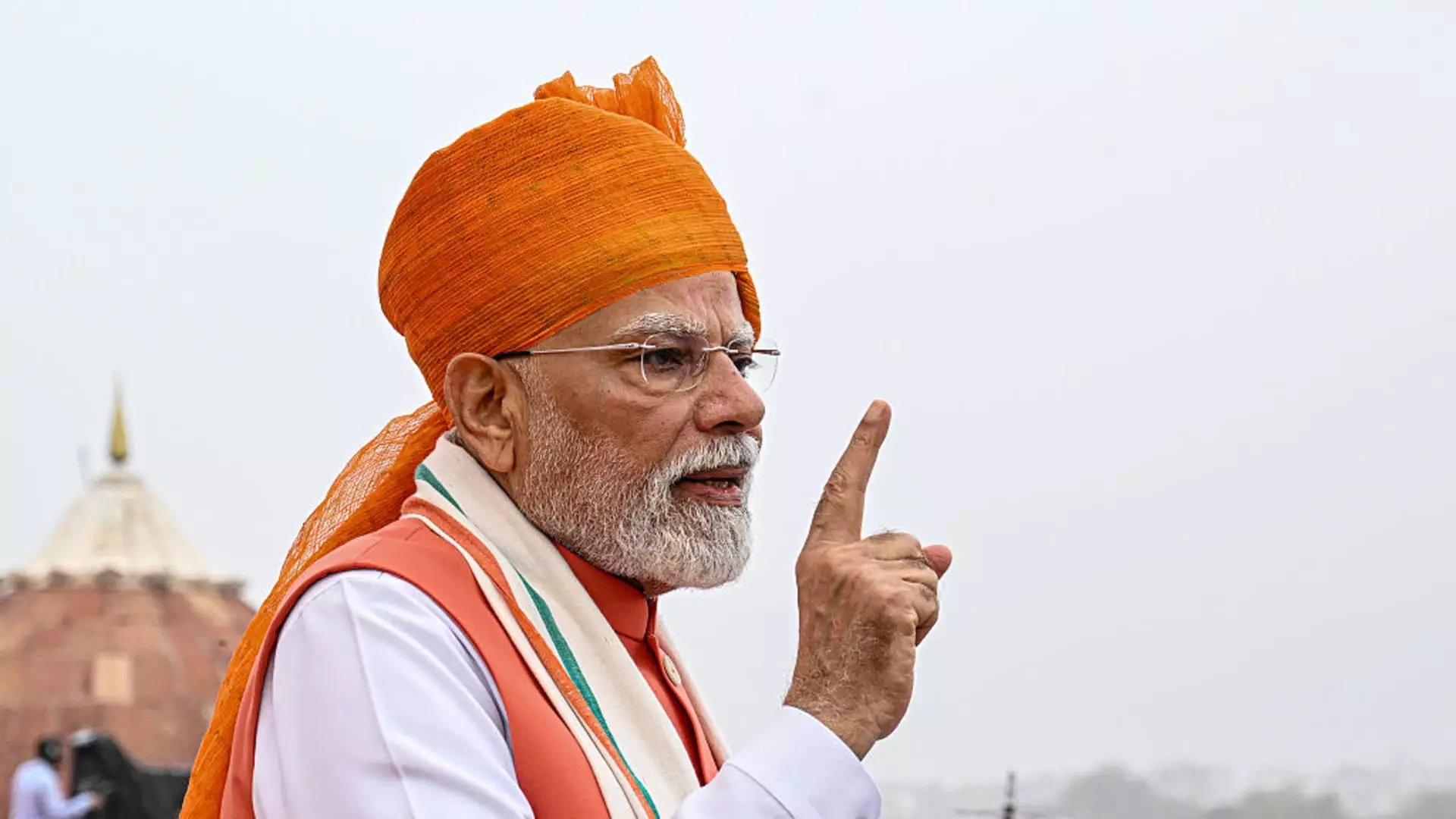India’s stock markets surged in response to Prime Minister Narendra Modi’s recent announcements, painting a picture of swift economic revival. Yet, beneath this optimistic veneer lies a complex reality. The Nifty 50 Index climbing by 1% and the Sensex by nearly 0.84% might seem like signs of economic strength, but this rally arguably reflects fleeting sentiment rather than durable growth. Markets often react enthusiastically to policy bets, and while these reforms hint at a modernization drive, they also mask underlying fragility in India’s economic fabric.
Investor enthusiasm appears overly optimistic, potentially blinded by short-term gains rather than long-term sustainability. Such exuberance often leads to inflated valuations that could unravel if geopolitical tensions or global economic headwinds intensify. Furthermore, the currency movement—the rupee appreciating against the dollar—might be viewed as positive, but it could also complicate India’s export competitiveness, which remains tightly linked to global demand. In other words, hype and hope are fueling the rally, not necessarily solid economic fundamentals.
Tax Cuts as a Double-Edged Sword
The government’s move to overhaul the Goods and Services Tax (GST) regime is a commendable attempt to streamline bureaucracy and lower compliance costs. The plan to reduce the GST slabs from multiple high rates to just two—5% and 18%—aims to foster a more investment-friendly environment. Certainly, simplifying the tax structure could incentivize small businesses and micro-enterprises, which are the backbone of India’s domestic economy.
However, skepticism arises when considering the fiscal implications. Lower tax rates may boost consumption temporarily, but they also risk eroding government revenue, potentially leading to widening fiscal deficits. Relying heavily on tax cuts to stimulate growth without concurrent expenditure reforms could set the stage for long-term fiscal instability. Moreover, while the intention is to aid manufacturing, logistics, and housing sectors, this approach risks creating a hollowed-out revenue base that future governments may struggle to sustain.
The notion of modernizing the GST framework through technology-driven processes is promising, yet the digital infrastructure must be robust enough to prevent leakages and corruption. If these systems falter, the intended efficiency gains could be compromised. The political gamble of pushing through significant tax reforms amidst global uncertainties and domestic fiscal pressures raises questions about the sustainability of such policies.
Economic Resilience or Vulnerability?
Modi’s policies are rooted in the belief that boosting domestic consumption can insulate India from external shocks, especially in an era of escalating U.S.-China tensions and punitive tariffs. The government’s focus on making India a self-reliant economy aligns with a nationalist narrative, but at what cost? Dismissing the importance of export-led growth in favor of a consumption-driven model can be shortsighted. India’s internal markets alone may not suffice to sustain double-digit growth, especially given low wage increases and stagnant household savings.
The significant reliance on consumption as a growth driver, with over 61% of GDP attributed to it, confers risks. If domestic demand falters or global uncertainties intensify—such as the looming tariffs on Indian imports from the U.S.—economic momentum could quickly dissipate. While the government expects the tax reforms to catalyze retail and consumer sectors, the recent slowdown in household savings and wage growth suggests a fragile base for this optimism.
Additionally, the auto industry’s recent rebound is promising but largely superficial if long-term structural issues—such as manufacturing inefficiencies, environmental concerns, and shifting consumer preferences—are not addressed. The recent 4.2% growth in passenger vehicle sales may be a confidence boost, but it does not guarantee sustained expansion.
Geopolitical Risks and Policy Challenges
Amid these domestic initiatives, India faces significant geopolitical headwinds. U.S. tariffs tied to India’s purchase of Russian crude, which are escalating to a hefty 50%, threaten to undermine this fragile recovery. This move risks further Alienating India from Western markets, complicating its trade relationships, and provoking retaliatory measures. The challenge for India is to balance its strategic autonomy with the pragmatic need for global integration.
The center-left perspective urges prudence in such aggressive reforms. While embracing change is vital, doing so without comprehensive safeguards could backfire. Relying heavily on consumption and hastily implemented reforms may lead to a bubble mentality, especially if external shocks or policy missteps occur. It is essential for India to foster a more diversified growth strategy—one that emphasizes innovation, sustainable manufacturing, and the development of human capital rather than mere tax cuts and short-term incentives.
Modi’s bold reforms are a gamble—an attempt to jumpstart a hesitant economy with a cocktail of tax cuts and regulatory simplifications. Whether this approach yields long-term prosperity or plunges India into deeper instability hinges on the government’s ability to manage the associated risks and build resilient economic structures. The questions remain: Is India betting on a fleeting rally, or laying the groundwork for genuine, inclusive growth?


Leave a Reply